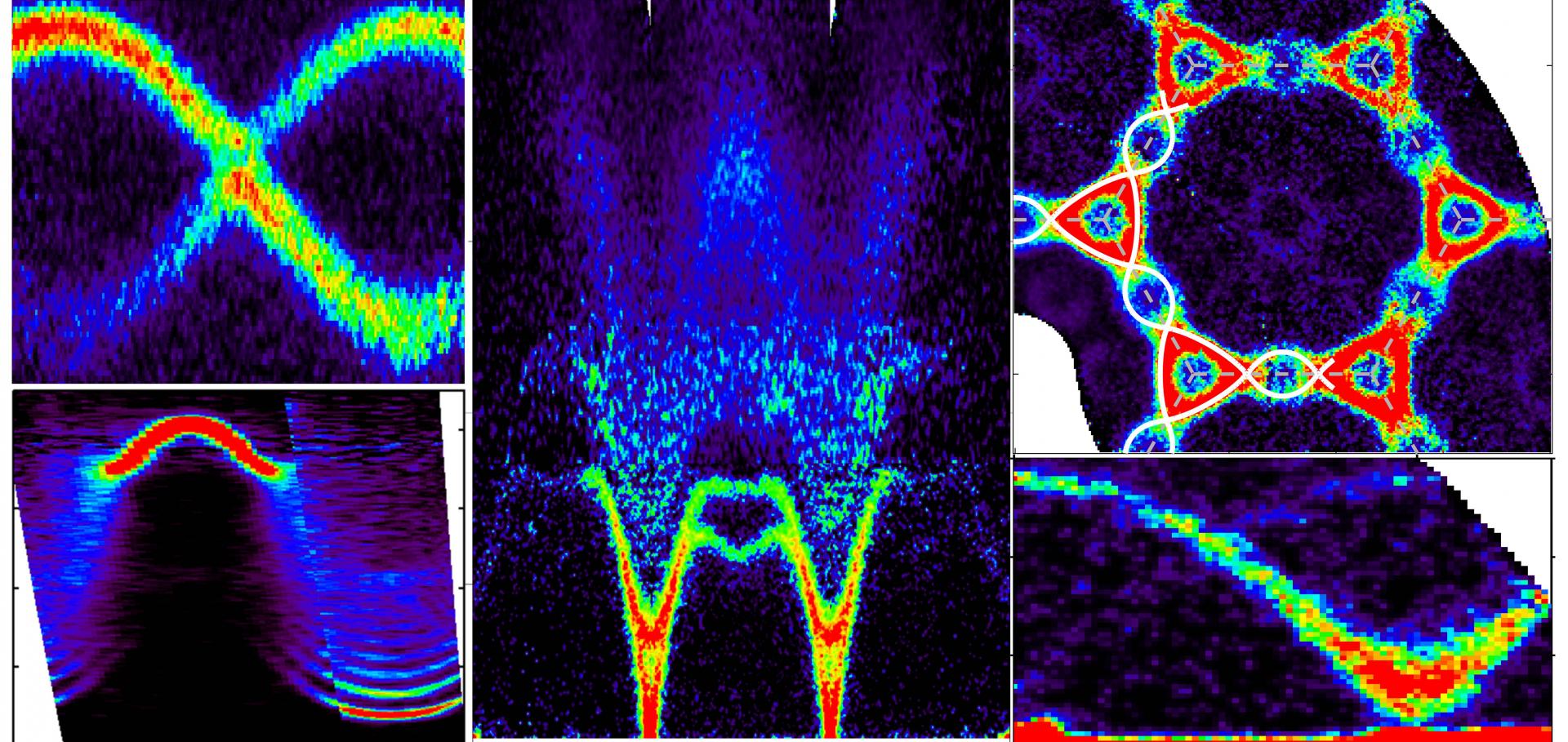Probing α − RuCl3 beyond magnetic order: effects of temperature and magnetic field
Physical Review Letters American Physical Society 120:7 (2018) 077203
Abstract:
Recent studies have brought α-RuCl_{3} to the forefront of experimental searches for materials realizing Kitaev spin-liquid physics. This material exhibits strongly anisotropic exchange interactions afforded by the spin-orbit coupling of the 4d Ru centers. We investigate the dynamical response at finite temperature and magnetic field for a realistic model of the magnetic interactions in α-RuCl_{3}. These regimes are thought to host unconventional paramagnetic states that emerge from the suppression of magnetic order. Using exact diagonalization calculations of the quantum model complemented by semiclassical analysis, we find a very rich evolution of the spin dynamics as the applied field suppresses the zigzag order and stabilizes a quantum paramagnetic state that is adiabatically connected to the fully polarized state at high fields. At finite temperature, we observe large redistributions of spectral weight that can be attributed to the anisotropic frustration of the model. These results are compared to recent experiments and provide a road map for further studies of these regimes.Spin dynamics of coupled spin ladders near quantum criticality in Ba2CuTeO6
University of Oxford (2018)
Abstract:
The deposited package contains inelastic neutron scattering data of the spin dynamics in the coupled ladder system Ba2CuTeO6 and complementary theoretical calculationsNeutron Scattering Signatures of Magnon Weyl Points
(2017)
Quasiparticle Breakdown and Spin Hamiltonian of the Frustrated Quantum Pyrochlore $Yb_{2}Ti_{2}O_{7}$ in a Magnetic Field
Physical Review Letters American Physical Society 119:5 (2017) 057203
Abstract:
The frustrated pyrochlore magnet $Yb_{2}Ti_{2}O_{7}$ has the remarkable property that it orders magnetically but has no propagating magnons over wide regions of the Brillouin zone. Here we use inelastic neutron scattering to follow how the spectrum evolves in cubic-axis magnetic fields. At high fields we observe, in addition to dispersive magnons, a two-magnon continuum, which grows in intensity upon reducing the field and overlaps with the one-magnon states at intermediate fields leading to strong renormalization of the dispersion relations, and magnon decays. Using heat capacity measurements we find that the low- and high-field regions are smoothly connected with no sharp phase transition, with the spin gap increasing monotonically in field. Through fits to an extensive data set of dispersion relations combined with magnetization measurements, we reevaluate the spin Hamiltonian, finding dominant quantum exchange terms, which we propose are responsible for the anomalously strong fluctuations and quasiparticle breakdown effects observed at low fields.Probing $\alpha$-RuCl$_3$ Beyond Magnetic Order: Effects of Temperature and Magnetic Field
(2017)


